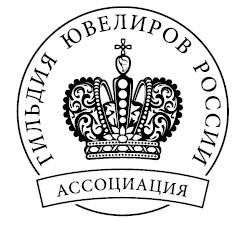 The Jewelers Guild of Russia submitted a letter to the government informing about the situation in the jewelry industry in connection with the introduction of jewelry hallmarking and expressing concern regarding the correctness of hallmarking technique chosen by the regulator and the amount of time needed for jewelry goods to pass this procedure. This is reported on the website of this industry organization.
The Jewelers Guild of Russia submitted a letter to the government informing about the situation in the jewelry industry in connection with the introduction of jewelry hallmarking and expressing concern regarding the correctness of hallmarking technique chosen by the regulator and the amount of time needed for jewelry goods to pass this procedure. This is reported on the website of this industry organization.The letter indicates that the hallmarking technique provides for putting laser marks straight on the surface of jewelry goods. Market stakeholders consider such a solution "too complex to implement and operate, unnecessarily costly and creating additional burden for business community."
“The amount of time needed to assay and hallmark jewelry in the territorial divisions of the Federal Assay Chamber and the risks of failures in the system arouse concerns. This will inevitably lead to multi-million-ruble losses for market stakeholders,” the Jewelers Guild of Russia said.
According to the letter, jewelry industry members offer a simpler, cheaper, and painless solution for market stakeholders. They believe that it is necessary to apply documentary tracking of jewelry turnover by unique identification numbers in combination with marking of material carriers (labels, tags) in the manner established for all other categories and goods made of precious metals and precious stones.
In this regard, jewelers propose to launch the State Integrated Information System in the field of control over the circulation of precious metals, precious stones and products from them in 2021 with the assignment of unique identification numbers to each jewelry item and application of two-dimensional bar codes on tags ( labels) and other tangible media accompanied with a digital photograph of the product; postpone the introduction of mandatory jewelry hallmarking until January 2022; and implement a pilot project for hallmarking jewelry during 2021 at two or three jewelry enterprises with full-cycle tests and audit of all business processes of the State Integrated Information System.
Vladimir Malakhov, Rough&Polished
